SIGGRAPH 2007: Global Eyes
Chair(s):
- Vibeke Sorensen
-
- University at Buffalo
- Arizona State University
- University of Southern California
Art Show Overview:
Welcome to Global Eyes, the 2007 Art Gallery. This year’s show focuses on transdisciplinary and transcultural approaches to digital art created around the world. Many countries and cultures are represented, including Argentina, Australia, Austria, Bangladesh, Belgium, Brazil, Canada, China, Colombia, Croatia, Egypt, England, France, Germany, Hong Kong, Hungary, India, Iran, Ireland, Italy, Japan, South Korea, Latvia, Mexico, New Zealand, Romania, Russia, Taiwan, Turkey, Ukraine, Venezuela, Wales, and the USA. We tried to be as inclusive as possible, welcoming artists from communities that are historically under-represented at the SIGGRAPH conference. Through rigorous and energetic reviews by the Art Gallery Jury and the international Art Gallery Committee’s thoughtful curatorial work, we succeeded in extending our scope to new communities in the developed and developing world, including indigenous communities locally, regionally, and internationally. Our delight with this greater participation is mitigated only by the fact that enormous disparities still exist in resource availability between nations and populations, which limits digital visual culture’s potential to become more globally democratic and inclusive.
We are happy that so many mature artists from around the world submitted work for jury review. The Art Gallery Committee augmented this process by inviting artists whose work directly relates to this year’s global theme, many of whom work in emerging areas of digital art. Growing from transdisciplinary activity across fields as well as cultures, digital ethnographic multimedia is one such area developing in the space between digital photography and video, animation, interactive art and performance, and ethnography.
We are delighted to welcome indigenous artists working in San Diego, Mexico, New Mexico, and Australia, including Cedar Sherbert (Kumeyaay), Damian Lopez Castillo (Zapoteco), Anthony Deiter (Plains Cree I Ojibwe), and r e a (Gamilaraay / Wailwan). In addition, Roderick Coover, Toby Lee, and J.P. Sniadecki are producing important work at the intersection of interactive art, digital video, and anthropology. Kooj Chuhan and virtual migrants work with immigrant communities in the United Kingdom and perform work that gives greater insight into the condition of people in the diaspora.
Because 75-90% of the earth’s people are still not connected by digital technology, and express their knowledge and culture in material media, most of their knowledge remains outside the digital realm. However, important work is being done to preserve and expand our collective human heritage using hybrid physical-digital processes. A transfer and transformation is taking place that expands the language and creative potential of digital media art, making it more intelligent and responsible, providing entry for people in many walks of life. That is why we are welcoming folk as well as fine-art approaches, handcraft and design, artist books, sculpture, and mixed media, while also showcasing contemporary digital artwork that is unique unto itself.
This includes Most Wanted by Taraneh Hemami, a handmade curtain of 87,000 beads; Worldprocessor by lngo Gunther, a series of more than 25 illuminated modified globes; as well as beautiful limited-edition books created by artists who are collaborating around the world, in some cases extending the concept of the travel diary to new forms of collaborative and mobile media art.
Some pieces in the gallery comment on political, social, and environmental problems, and question human relationships to nature, both actively (as our environment faces destruction and species extinction), and in personal, introspective, and philosophical terms. Artists working together with scientists externalize their deepest beliefs and doubts about the mysteries of life and existence. Some take the form of abstract images to reveal underlying organizing principles of the mind, body, and nature; others use visualization, real-time 30 animation, dance and performance, robotics, and interactive installation. Online and immersive works challenge definitions and categories, transcending boundaries of language, time, space, and location in their beauty and daring. Some are meant to make us question our assumptions, while others show us our human frailties and contradictions in playful and humorous ways. Ben Maggos (1981-2005), whose memory we are honoring, created the prescient and moving work What About Job? that explores many of these ideas in interactive, cinematic form.
This year’s show features several invited special exhibitions. We are honored to include a selection from the online international photography collection ZoneZero.com, directed by acclaimed photographer Pedro Meyer, as well as 20 works from the 2007 Visual Music Marathon (held at Northeastern University) curated by Dennis H. Miller. The Japan Media Arts Festival has provided a special selection of work from their most recent show, including digital prints and animation by the talented 14-year-old artist, Shunsaku Hayashi. And for the first time this year, we are working with the Guerilla Studio to show the work of six Artists-in-Residence: Harriete Estel Berman, Matt Hamon, Philip Mallory-Jones, Mike Simonian, Maaike Evers, and Michael Wright.
We are especially pleased to present an exciting program of innovative electronically mediated performances and site-specific installations by leading international artists. They are taking place in a special weekend engagement (4-6 August) at the state-of-the-art facilities of the California Institute for Telecommunications and Information Technology (Cal-lT2) and the Center for Research in Computing and the Arts, at the University of California, San Diego.
Finally, as 2007 is the 25th anniversary of the 1982 SIGGRAPH Art Show, we are exhibiting an electronic archive created by 1982 chair Copper Frances Giloth.
Vibeke Sorensen, Global Eyes Chair
Jury:
- Heitor Capuzzo
-
- Universidade Federal de Minas Gerais
- Sue Gollifer
-
- University of Brighton
- ISEA International Headquarters
- Francisco Marinho
-
- Universidade Federal de Minas Gerais
- Victoria Szabo
-
- Duke University
- Cristina Venegas
-
- University of California Santa Barbara
- Ruth G. West
-
- University of North Texas
- xREZ Art+Science lab
- National Center for Microscopy and Imaging Research
- UCSD Center for Research
- University of California, San Diego
- Jana Whittington
-
- Purdue University, Calumet
- Shahrokh Yadegari
-
- University of California
Visual Proceedings:
View PDF: [SIGGRAPH 2007: Global Eyes]
Acknowledgements:
Thanks to the following people and institutions:
Aaron Baker, Arizona State University
Roger Malina, ISAST Leonardo
Marilenis Olivera,
Stanford University, The Stanford Writing Center and the English and Linguistics Departments for the generous use of their facilities
Stanford University Office of the Vice Provost for Undergraduate Education
Larry Smarr, Director, Cal-lT2
Ramesh Rao, Director, Cal-lT2, University of California, San Diego Division
Sheldon Brown, Cal-lT2 and the Center for Research in Computing and the Arts (CRCA)
Exhibition Artworks:
-
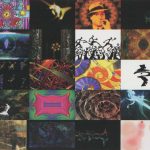
Type: [Animation & Video]
2007 Northeastern University Visual Music Marathon
Artist(s): [Miller]
[SIGGRAPH 2007]
-

Type: [Interactive & Monitor-Based]
25 – Birth and Decay
Artist(s): [Konczak]
[SIGGRAPH 2007]
-
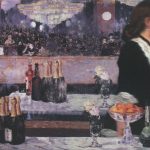
Type: [Installation]
A Bar at the Folies Bergère
Artist(s): [Lawson and Bilal]
[SIGGRAPH 2007]
-

Type: [Installation]
A Digital Window for Watching Snow Scenes
Artist(s): [Guo]
[SIGGRAPH 2007]
-
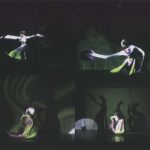
Type: [Performance]
A Rhyme of the Tang Dynasty
Artist(s): [Sun, Jin, Lei, and Zhang]
[SIGGRAPH 2007]
-
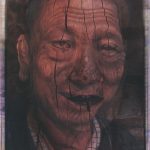
Type: [Interactive & Monitor-Based]
A Wooden Face
Artist(s): [Meyer]
[SIGGRAPH 2007]
-

Type: [2D & Wall-Hung]
air
Artist(s): [Lin]
[SIGGRAPH 2007]
-

Type: [2D & Wall-Hung]
Algorithmic mirror
Artist(s): [Ceric]
[SIGGRAPH 2007]
-
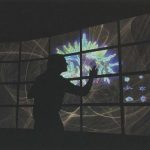
Type: [Installation]
ATLAS in silico
Artist(s): [West]
[SIGGRAPH 2007]
-

Type: [Performance]
Autocosm 2007
Artist(s): [Adamczyk]
[SIGGRAPH 2007]
-
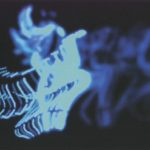
Type: [Performance]
Autopoiesis Memesis
Artist(s): [Cerar and Borissov]
[SIGGRAPH 2007]
-

Type: [Performance]
Bibigi
Artist(s): [Lee]
[SIGGRAPH 2007]
-
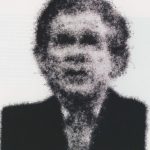
Type: [2D & Wall-Hung]
Big Hairy Bush – Hair Particle Drawing Project
Artist(s): [Relyea]
[SIGGRAPH 2007]
-
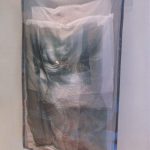
Type: [2D & Wall-Hung]
Blue Faith
Artist(s): [Pyune]
[SIGGRAPH 2007]
-

Type: [Installation]
bogs: Instrumental Aliens
Artist(s): [Takahashi]
[SIGGRAPH 2007]
-
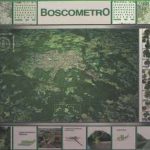
Type: [Installation]
Boscometro More Than a Green Belt for a City
Artist(s): [Boeri]
[SIGGRAPH 2007]
-
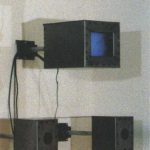
Type: [Electronic/Robotic ObjectInstallation]
CASE STUDY 9983 & 9983-B
Artist(s): [Knipp]
[SIGGRAPH 2007]
-

Type: [Installation]
Chang-Tei System
Artist(s): [Sueda]
[SIGGRAPH 2007]
-

Type: [2D & Wall-Hung]
Clear Water Act
Artist(s): [Ursyn]
[SIGGRAPH 2007]
-
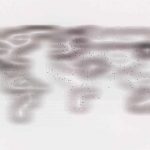
Type: [2D & Wall-Hung]
Connections
Artist(s): [Trempe]
[SIGGRAPH 2007]
-
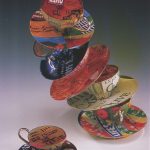
Type: [Installation]
Consuming Conversation
Artist(s): [Berman]
[SIGGRAPH 2007]
-
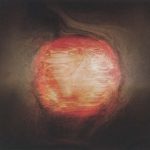
Type: [2D & Wall-Hung]
Core
Artist(s): [Lin]
[SIGGRAPH 2007]
-
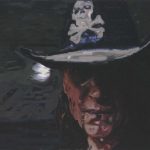
Type: [2D & Wall-Hung]
Cowboy
Artist(s): [Wright]
[SIGGRAPH 2007]
-
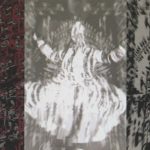
Type: [Interactive & Monitor-Based]
Crowded with Voices
Artist(s): [Belkina]
[SIGGRAPH 2007]
-
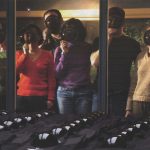
Type: [Performance]
Cyber Glogger
Artist(s): [Mann]
[SIGGRAPH 2007]
-
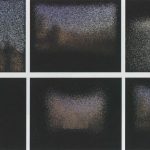
Type: [2D & Wall-Hung]
Cyvers Viral City
Artist(s): [Sulic]
[SIGGRAPH 2007]
-
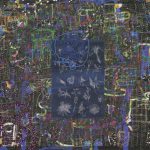
Type: [2D & Wall-Hung]
Dark Filament
Artist(s): [Faure Walker]
[SIGGRAPH 2007]
-
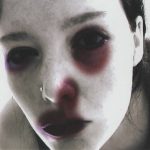
Type: [Interactive & Monitor-Based]
De Vez En Cuando
Artist(s): [Reich]
[SIGGRAPH 2007]
-
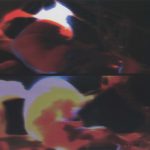
Type: [Installation]
Deep Dark: Real-Time Interactive Cinema Project
Artist(s): [Poat]
[SIGGRAPH 2007]
-
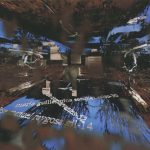
Type: [Installation]
Desert Views, Desert Deaths
Artist(s): [Petrovich and Horn]
[SIGGRAPH 2007]
-
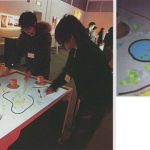
Type: [Installation]
Diorama Table
Artist(s): [Takahashi]
[SIGGRAPH 2007]
-
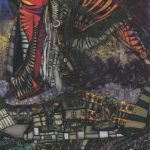
Type: [2D & Wall-Hung]
Do-Bu-Ro-Ku
Artist(s): [Hayashi]
[SIGGRAPH 2007]
-
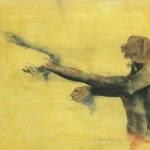
Type: [2D & Wall-Hung]
Dog Years
Artist(s): [Hamon]
[SIGGRAPH 2007]
-
![Dreaming a Fingertip Conversation with You _ tactuaL [si:gak] series](https://history.siggraph.org/wp-content/uploads/2017/08/2007_KimAhn_DreamingaFingerTipConversationWithYou-150x150.jpg)
Type: [Installation]
Dreaming a Fingertip Conversation with You _ tactuaL [si:gak] series
Artist(s): [Kim and Ahn]
[SIGGRAPH 2007]
-
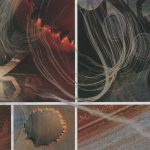
Type: [2D & Wall-Hung]
Drought
Artist(s): [Newcombe]
[SIGGRAPH 2007]
-
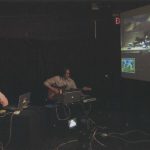
Type: [Performance]
Dynamic Spaces
Artist(s): [Oliveros]
[SIGGRAPH 2007]
-
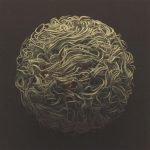
Type: [2D & Wall-Hung]
Dynamo
Artist(s): [Stock]
[SIGGRAPH 2007]
-
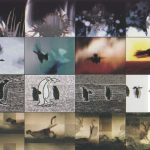
Type: [Performance]
e'scapes
Artist(s): [Cádiz, Clelland, and Lelong]
[SIGGRAPH 2007]
-
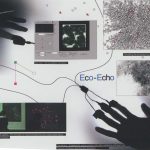
Type: [Installation]
eco-echo
Artist(s): [Yu and Chen]
[SIGGRAPH 2007]
-

Type: [2D & Wall-Hung]
Elevation #2
Artist(s): [Wong]
[SIGGRAPH 2007]
-

Type: [2D & Wall-Hung]
Eleven Fifty Nine
Artist(s): [Newcombe]
[SIGGRAPH 2007]
-

Type: [2D & Wall-Hung]
Eternity (Ch’an Mind, Zen Mind Series)
Artist(s): [Zhou]
[SIGGRAPH 2007]
-

Type: [Performance]
Exhale
Artist(s): [Chuhan]
[SIGGRAPH 2007]
-
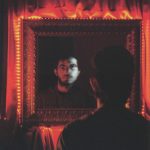
Type: [Installation]
Faces
Artist(s): [Goya]
[SIGGRAPH 2007]
-

Type: [2D & Wall-Hung]
falling water
Artist(s): [Hardie]
[SIGGRAPH 2007]
-

Type: [2D & Wall-Hung]
Flow
Artist(s): [Inakage]
[SIGGRAPH 2007]
-
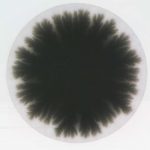
Type: [2D & Wall-Hung]
Flow 19
Artist(s): [Lomas]
[SIGGRAPH 2007]
-
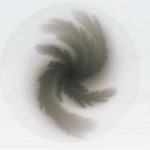
Type: [2D & Wall-Hung]
Flow 9
Artist(s): [Lomas]
[SIGGRAPH 2007]
-

Type: [2D & Wall-Hung]
Flowers of Learning: “Hortus Conclusus”
Artist(s): [Verostko]
[SIGGRAPH 2007]
-
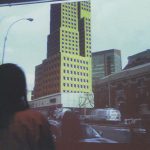
Type: [Installation]
Future Perfect
Artist(s): [Croft, Efron, and Purver]
[SIGGRAPH 2007]
-
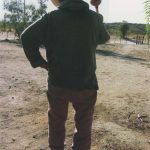
Type: [Interactive & Monitor-Based]
Gesture Down (I Don’t Sing)
Artist(s): [Sherbert]
[SIGGRAPH 2007]
-

Type: [Interactive & Monitor-Based]
Global Eyes Web Site
Artist(s): [Perez-Avila]
[SIGGRAPH 2007]
-
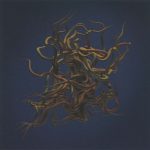
Type: [2D & Wall-Hung]
Green Streamlines
Artist(s): [Stock]
[SIGGRAPH 2007]
-

Type: [2D & Wall-Hung]
Guns and Kolbasa
Artist(s): [Kidd]
[SIGGRAPH 2007]
-
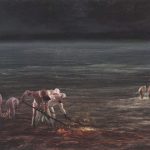
Type: [2D & Wall-Hung]
Hawker, Hacker, Herald
Artist(s): [Johnson]
[SIGGRAPH 2007]
-
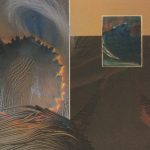
Type: [2D & Wall-Hung]
Here, There
Artist(s): [Newcombe]
[SIGGRAPH 2007]
-

Type: [Interactive & Monitor-Based]
Hitch-Haiku
Artist(s): [Tosa]
[SIGGRAPH 2007]
-

Type: [Interactive & Monitor-Based]
Hitch-Haiku
Artist(s): [Matsuoka and Tosa]
[SIGGRAPH 2007]
-
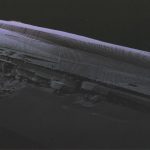
Type: [2D & Wall-Hung]
HMS Royal Oak
Artist(s): [Rowland]
[SIGGRAPH 2007]
-
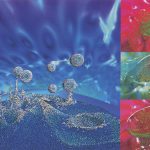
Type: [Installation]
Hydrodynamics Ocean
Artist(s): [Kawaguchi]
[SIGGRAPH 2007]
-

Type: [Installation]
I was scared to death/I could have died of joy
Artist(s): [Richards]
[SIGGRAPH 2007]
-

Type: [Artist Book]
If Dreams Could Talk
Artist(s): [Bishop]
[SIGGRAPH 2007]
-

Type: [Performance]
Imago
Artist(s): [Joreg]
[SIGGRAPH 2007]
-
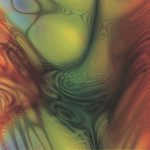
Type: [2D & Wall-Hung]
ime slice (meliá)
Artist(s): [Evans]
[SIGGRAPH 2007]
-

Type: [2D & Wall-Hung]
Improvised Empathetic Device
Artist(s): [Kenyon]
[SIGGRAPH 2007]
-
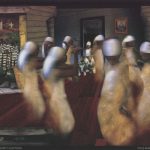
Type: [Interactive & Monitor-Based]
IN THE SWEET BYE & BYE SL (a Second Life installation)
Artist(s): [Jones]
[SIGGRAPH 2007]
-

Type: [2D & Wall-Hung]
Integrity: structure and surface
Artist(s): [McGhee]
[SIGGRAPH 2007]
-

Type: [2D & Wall-Hung]
Intertwined: Person, Place, and Time
Artist(s): [Maloney]
[SIGGRAPH 2007]
-
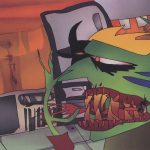
Type: [Animation & Video]
Ireva
Artist(s): [Hayashi]
[SIGGRAPH 2007]
-
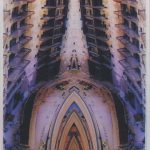
Type: [2D & Wall-Hung]
Kanyon reconstructed
Artist(s): [Germen]
[SIGGRAPH 2007]
-
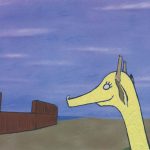
Type: [Animation & Video]
La Grua Y La Jirafa (The Crane and the Giraffe)
Artist(s): [Bellini]
[SIGGRAPH 2007]
-

Type: [2D & Wall-Hung]
Landfill
Artist(s): [Newcombe]
[SIGGRAPH 2007]
-
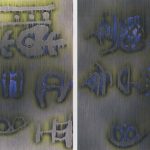
Type: [2D & Wall-Hung]
Letters I, Letters II
Artist(s): [Lu]
[SIGGRAPH 2007]
-
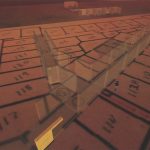
Type: [Interactive & Monitor-Based]
Life Squared
Artist(s): [Hershman]
[SIGGRAPH 2007]
-
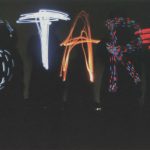
Type: [Animation & Video]
Lighting Doodle Project 'PikaPika'
Artist(s): [Takeshi and Kazue]
[SIGGRAPH 2007]
-
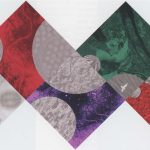
Type: [2D & Wall-Hung]
Linkages
Artist(s): [de la Serra]
[SIGGRAPH 2007]
-

Type: [Artist Book]
LISSEN HERE!
Artist(s): [Jones]
[SIGGRAPH 2007]
-
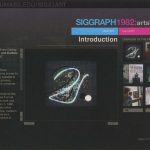
Type: [Interactive & Monitor-Based]
Looking Back 25 Years: SIGGRAPH 82 Art Show
Artist(s): [Giloth]
[SIGGRAPH 2007]
-
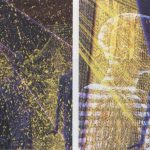
Type: [2D & Wall-Hung]
Luminous Presence
Artist(s): [Dawson]
[SIGGRAPH 2007]
-
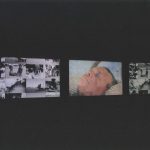
Type: [Interactive & Monitor-Based]
maang (message stick)
Artist(s): [r e a]
[SIGGRAPH 2007]
-

Type: [2D & Wall-Hung]
Meteor Crater Observatory on Old Route 66, Arizona
Artist(s): [Poindexter]
[SIGGRAPH 2007]
-

Type: [Installation]
Mobile Heart Health
Artist(s): [Morris]
[SIGGRAPH 2007]
-
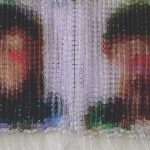
Type: [2D & Wall-Hung]
Most Wanted
Artist(s): [Hemami]
[SIGGRAPH 2007]
-
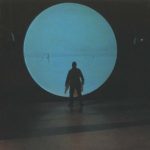
Type: [Interactive & Monitor-BasedSound Art]
N.
Artist(s): [Polli and Gilmore]
[SIGGRAPH 2007]
-
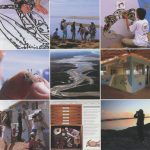
Type: [Interactive & Monitor-Based]
NaturArte
Artist(s): [McMahon]
[SIGGRAPH 2007]
-
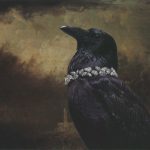
Type: [2D & Wall-Hung]
No. 6, from the series Thread and Carbon, Oil and Steel
Artist(s): [Larson]
[SIGGRAPH 2007]
-
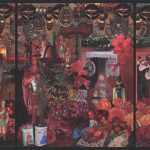
Type: [Installation]
Nou La
Artist(s): [Chupa]
[SIGGRAPH 2007]
-
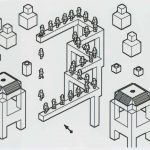
Type: [Installation]
OLE Coordinate System
Artist(s): [Fujiki]
[SIGGRAPH 2007]
-
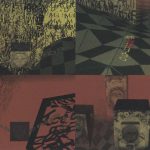
Type: [Installation]
Palavrador
Artist(s): [Marinho]
[SIGGRAPH 2007]
-
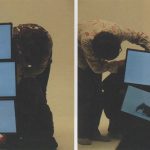
Type: [Performance]
Performing Arts for the Future Mobile Generation
Artist(s): [Matoba]
[SIGGRAPH 2007]
-
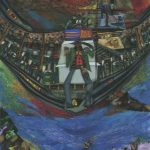
Type: [2D & Wall-Hung]
Perry’s
Artist(s): [Hayashi]
[SIGGRAPH 2007]
-
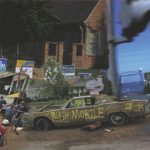
Type: [Interactive & Monitor-Based]
Places of Memory
Artist(s): [Coles]
[SIGGRAPH 2007]
-
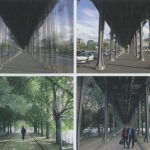
Type: [Interactive & Monitor-Based]
Psychogeographical Studies
Artist(s): [Rabie]
[SIGGRAPH 2007]
-

Type: [Performance]
Rage to Know
Artist(s): [Masucci]
[SIGGRAPH 2007]
-
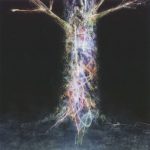
Type: [2D & Wall-Hung]
Re-formation
Artist(s): [Takano]
[SIGGRAPH 2007]
-
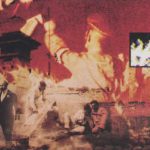
Type: [2D & Wall-Hung]
Re-remembered, digital palimpsests
Artist(s): [DeLevie]
[SIGGRAPH 2007]
-
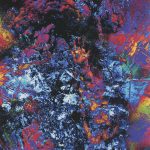
Type: [2D & Wall-Hung]
Revolution
Artist(s): [Barakate]
[SIGGRAPH 2007]
-
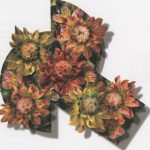
Type: [2D & Wall-Hung]
RHODADALIA
Artist(s): [Bowman]
[SIGGRAPH 2007]
-
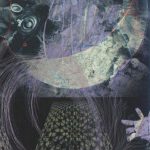
Type: [2D & Wall-Hung]
Robotman
Artist(s): [Newcombe]
[SIGGRAPH 2007]
-
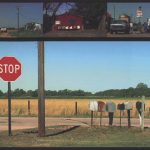
Type: [Animation & VideoInstallation]
Royal, Nebraska
Artist(s): [Lee and Lazaridou-Hatzigoga]
[SIGGRAPH 2007]
-
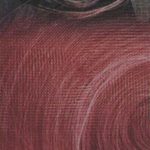
Type: [2D & Wall-Hung]
Running on Empty
Artist(s): [Newcombe]
[SIGGRAPH 2007]
-
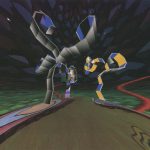
Type: [Installation]
Rutopia 2
Artist(s): [Tsoupikova]
[SIGGRAPH 2007]
-
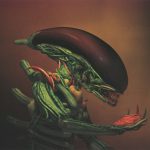
Type: [2D & Wall-Hung]
Salad
Artist(s): [Nowak]
[SIGGRAPH 2007]
-
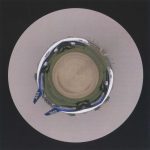
Type: [2D & Wall-Hung]
scan Gate
Artist(s): [Kobayashi]
[SIGGRAPH 2007]
1
2
Next ›
Last »



